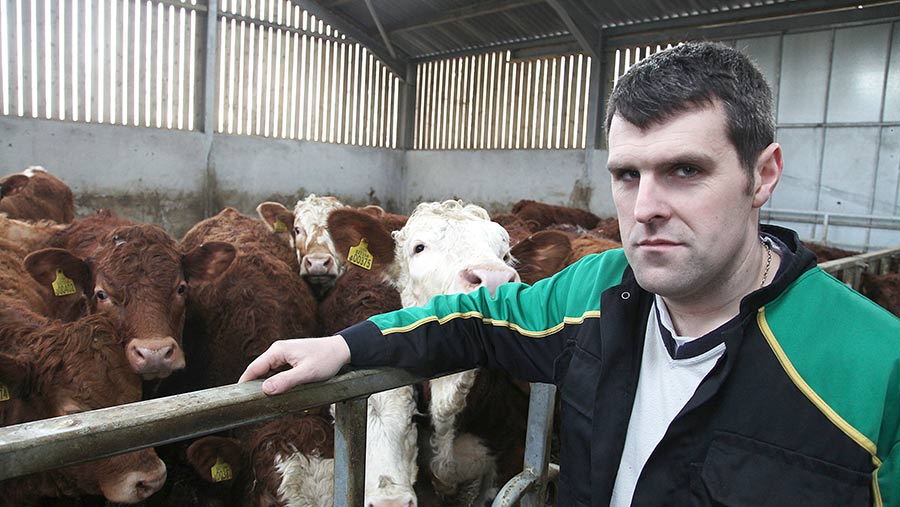Farmer Focus: Flooding makes for messy ploughing
 © Ken Amer
© Ken Amer With the cattle trade back this year, it was expected the trade at the Stirling Bull Sales would be more favourable to the buyers. I needed two Simmental bulls and I prefer dark red ones, which limits the choice.
Although averages were back on the year, I still ended up spending more money than I intended to, but two bulls for less than £8,000 probably isn’t that bad.
See also: How wet weather is affecting cropping plans and farm finances
Other than a couple of poor days of wind and rain, November has been a fairly good month weather-wise. It has given us a good chance to get on with outside jobs, and I did manage to get my ploughing done, although anyone who is passionate about ploughing matches will probably feel unwell looking at my ploughing.
Wheel tracks from the combine in fields that have stood full of water for weeks doesn’t make for ploughing that is easy on the eye, but I would rather look at bad ploughing than geese playing in a swamp.
Our Zwartbles-cross lambs aren’t very easy to put flesh on, so we thought we would buy a Texel tup. Since going in with the ewes, he has been lame on at least one leg most days and spends a lot of the time with his chin on the ground, so it will be nothing short of a miracle if we have white lambs in April.
Weaning takes longer than expected
Weaning has been a drawn-out affair this year, with the first calves sold in early October, and the last only coming in on 19 November.
This year, 93% of the cows that were exposed to the bull have reared a calf. The calves averaged 327kg, with a daily liveweight gain of 1.26kg.
I didn’t weigh the cows this year, but based on the last time they were weighed, the calves would be 46% of their mother’s weight. The calves averaged £702, which is £49 less than 2018.
Just when one season is finished, the next one starts. The cows were scanned today, with 95% in-calf, which is very similar to previous years.
Steven Sandison farms 100 Simmental and Salers-cross cows on the Orkney Islands in partnership with his wife, Lorraine. They have a small flock of sheep and grow 8ha of spring barley. Making the most of grass is a priority.
